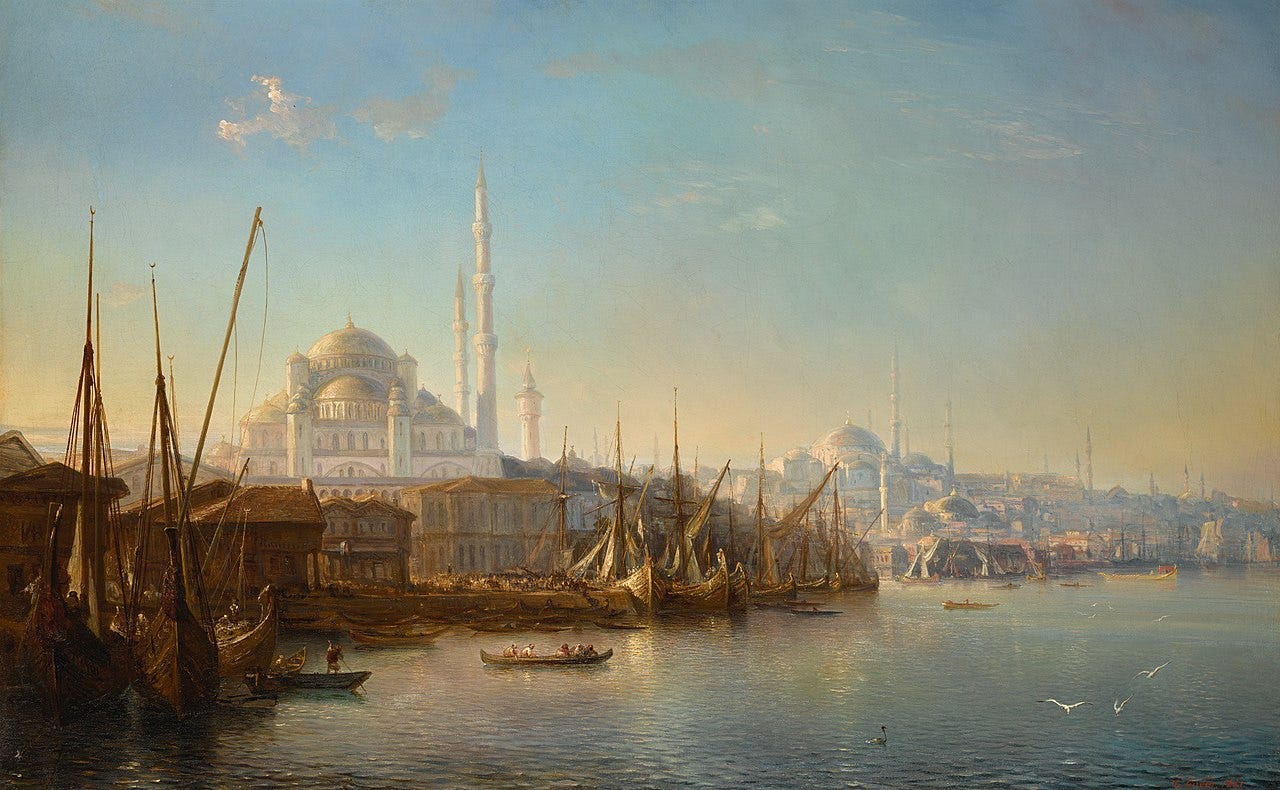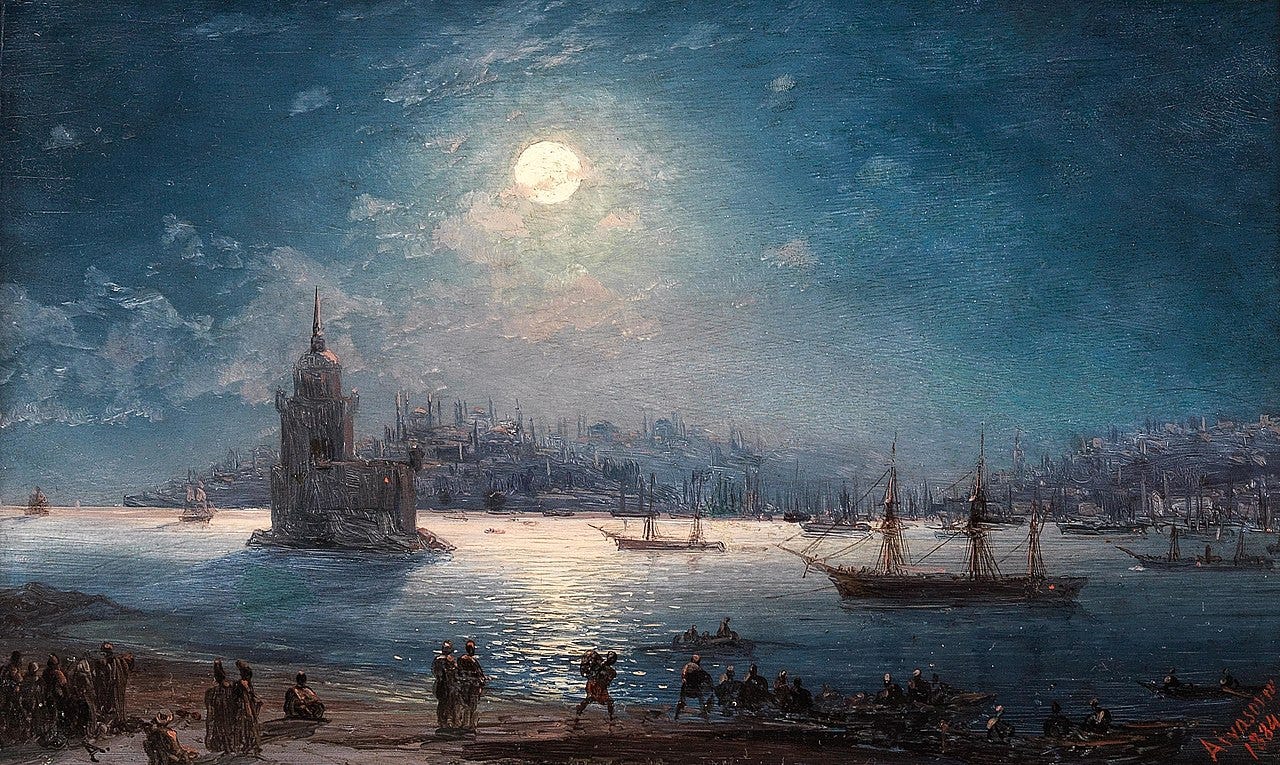Istanbul in Paint
Welcome to Cosmographia. The following is part of our World in Paint series. For the full map of Cosmographia posts, see here.
This time next week I’ll be in Istanbul, so to get in the mood I thought we’d take a look at the ‘Queen of Cities’ through the eyes of some of history’s greatest artists.
At the northeastern edge of the Mediterranean Sea, either side of a narrow channel of water, there lies a city straddling two continents. A city that, over the course of her nearly 3000 year history, has had many names.
In her earliest days she was Byzantion (to Greeks; Byzantium to Romans), a small trading post first settled by Greeks from Megara. These Magarians claimed descent from Byzas, son of Poseidon, god of the sea, and the nymph Ceroëssa. They felt themselves blessed and who could blame them; rarely has there been such a perfect position for a new city.
Almost a thousand years passed before the Roman Emperor Constantine gave the small town a new name: Nova Roma, New Rome. He transformed the minor settlement into the Christian co-capital of perhaps the most sophisticated civilisation of the ancient world, irrevocably shifting its power and focus eastwards. The city’s importance to the emerging Christian faith would be reflected in another of its monikers, New Jerusalem, but most simply referred to her after her founder: Constantinople (later becoming al-Qustantiniyye or Konstaniniyye).
Such was her power and influence that the Prophet Muhammad, standing at the head of a new faith that would soon take the Eastern and Southern Mediterranean by storm, would prophesise in the 7th century AD the city’s fall to his faithful. So it came to be, when in 1453 the Christian city of Greek-speaking Romans at last gave out to Mehmed II’s armies. Such was his respect for the great city he made it the new capital of his sprawling Ottoman Empire, and declared himself qayṣar-i Rūm (Caesar of Rome). Under her new rulers, the city became perhaps the most important centre of Islamic power in the world, earning new titles in the process: Allah’s Eternal City and Islambol (‘full of Islam’).
In time, the Queen of Cities wouldn’t even need a name. To be in Konstaniniyye was simply to be ‘in the city’ — Stimboli. This became Stamboul, and then eventually, made official in 1930, Istanbul.
If one had but a single glance to give the world, one should gaze on Istanbul.
1. The Golden Horn — Théodore Gudin (1851)
2. Alphonse de Lamartine (c. early 19th century)
Marbles of the dancing floor Break bitter furies of complexity, Those images that yet Fresh images beget, That dolphin-torn, gong-tormented sea.



